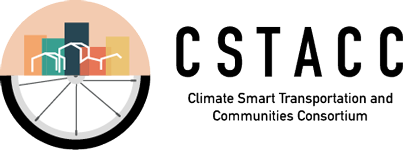Inland Empire Regional Initiative
The Inland Empire has poor access to public transit, significant traffic congestion, severe air pollution, a shortage of affordable housing, and high levels of truck traffic associated with local warehousing. UCR’s new Center for Social Innovation (CSI) has received significant philanthropic support to address these challenges in the two-county region (San Bernardino and Riverside Counties). This proposal will build upon CSI’s current and past work, as well as that of UCR’s Center for Environmental Research and Technology (CE-CERT), to develop strategies and policies to reduce traffic-related emissions in and around the Inland Empire and improve the quality of life of residents. The two main research areas are listed below:
Shared, Electric, Connected, and Automated Transportation in the City of Riverside
The Innovation Corridor (six miles of University Avenue between the main UCR campus and downtown Riverside) is being outfitted with modern traffic signal controllers that broadcast signal phase and timing, employ video analytics, and will be used for future shared, electric, connected and automated vehicle experimentation for cars, transit, and trucks. In addition, next-generation air quality sensors will be installed throughout the corridor to measure the pollution impacts of various transportation strategies. The UCR-led team will leverage the city’s investment in the Innovation Corridor to test how advanced transportation technology can be cost-effectively deployed to reduce GHG emissions, improve local air quality, and better serve the mobility needs of residents. Research questions include: 1) How to combine shared mobility services with connected and automated vehicles to better manage total traffic? 2) What are innovative energy management strategies to enhance electrification and improve operational efficiency across all vehicle modes? 3) What data is needed from the community to support successful deployment of various transportation technologies? 4) What services and incentives can be provided to citizens in the Innovation Corridor to make adoption of the transportation technology feasible? 5) What policies are needed to support these initiatives to transform the movement of people and goods in this disadvantaged community?
Reducing Impacts of Goods Movement
In the last decade, many large warehouses have been built in the Inland Empire, including the proposed “World Logistic Center,” which will cover 2,000 acres and generate over 14,000 additional truck trips per day (Ghori 2016). State-of-the-art freight transportation models will be used to gain a better understanding of the impacts of goods movement in the region and to help design innovative supply chain management strategies to improve the flow of goods and reduce negative impacts on the surrounding communities. Selected corridors for the study will be coordinated with AB 617 ambient data collection programs as well as with the freight-related research being supported in the SELA region. Research questions include: 1) How to improve efficiency of goods movement in the Inland Empire in the short and long term with respect to supply chain management and siting of warehouses and distribution centers? 2) What are effective emissions reduction techniques for heavy-duty trucks and associated traffic? 3) What policy changes are needed to support these initiatives and to transform goods movement within the region?
